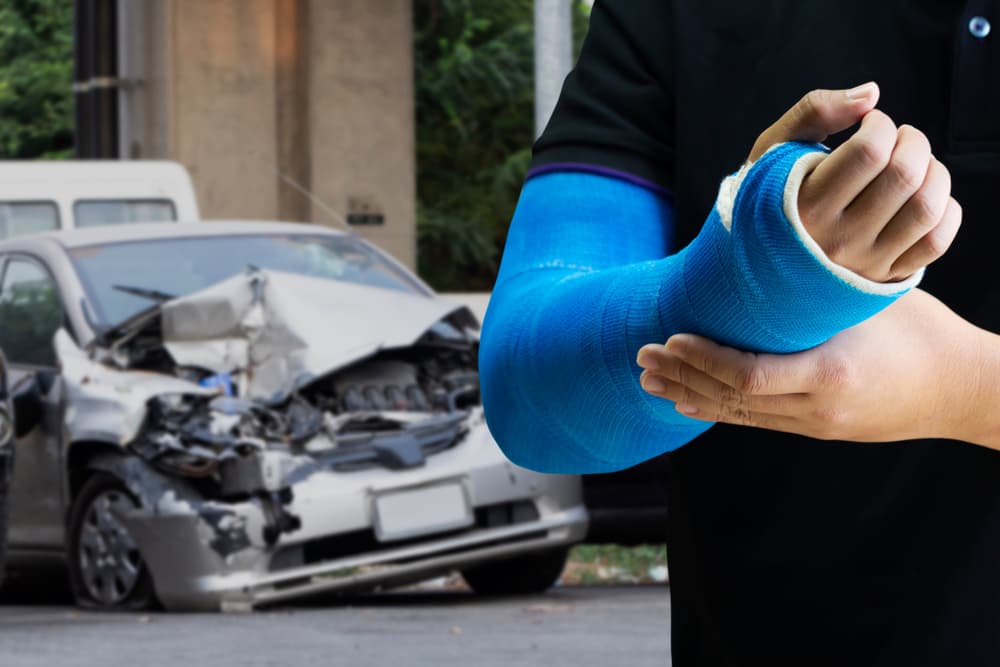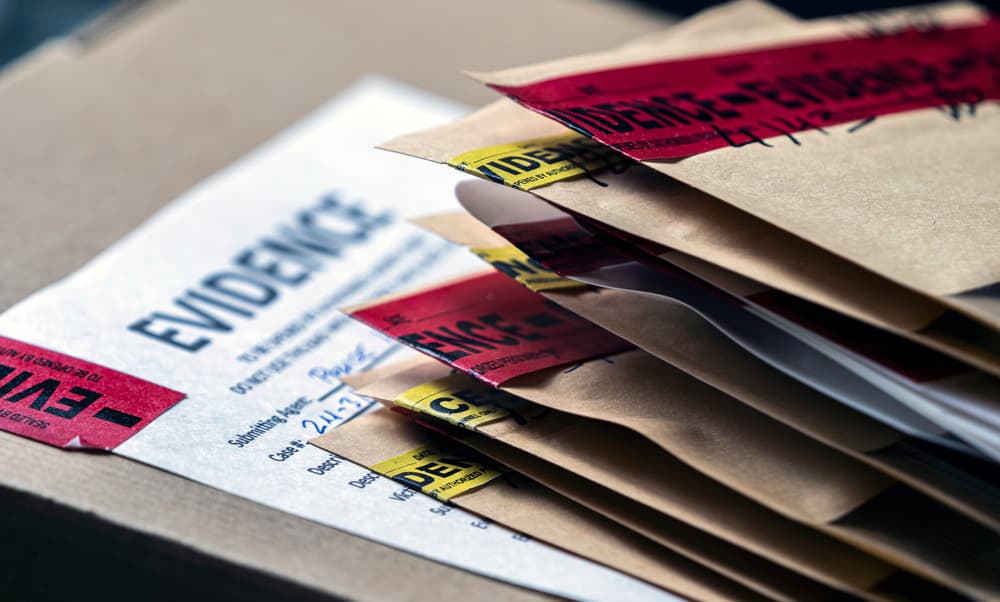When an accident causes serious injuries, medical bills and lost wages can add up quickly. Many people wonder, "What is the average payout for a personal injury claim in the USA?" The answer depends on several factors, including the severity of the injury, liability issues, and insurance policy limits. While some cases result in settlements of a few thousand dollars, others lead to payouts in the millions.
Every personal injury case is different, so there’s no single "average" payout that applies to all claims. However, reviewing typical settlement amounts for different injuries and accidents can provide a general idea of what to expect. If someone else's negligence caused your injuries, working with an experienced personal injury lawyer can help you pursue the maximum compensation available for your situation.
Factors That Influence Personal Injury Payouts

Several key factors determine the value of a personal injury settlement or court award. Insurance companies, attorneys, and juries consider the severity of injuries, medical costs, liability issues, and other elements when calculating compensation.
Severity of Injuries
More severe injuries typically result in higher payouts. A minor sprain or bruise may not lead to substantial compensation, while a traumatic brain injury, spinal cord damage, or amputation can result in settlements or verdicts reaching hundreds of thousands or even millions of dollars.
Medical Expenses (Current and Future)
Compensation should cover all medical costs, including emergency care, hospital stays, surgeries, rehabilitation, and follow-up visits. Future medical expenses also play a role, particularly for injuries requiring long-term treatment, therapy, or assistive devices.
Lost Wages and Earning Capacity
Time away from work due to an injury can lead to lost income, which is factored into the claim. If the injury permanently limits the ability to work, compensation may include reduced earning capacity for the rest of the injured person’s career.
Liability Clarity
When the at-fault party's responsibility for the accident is clear, insurance companies have less room to dispute the claim. Strong evidence—such as police reports, witness statements, or surveillance footage—can lead to a higher payout. If liability is uncertain or shared between multiple parties, settlement negotiations may be more difficult.
Insurance Policy Limits
Compensation often depends on the at-fault party’s insurance coverage. If damages exceed the policy limit, the injured party may need to seek additional compensation through personal assets, umbrella insurance policies, or other legal avenues.
Jurisdiction Differences
State laws impact how personal injury claims are handled. Some states cap damages for certain types of claims, while others allow juries to award significant amounts. The local legal environment, jury tendencies, and whether the state follows no-fault or tort-based insurance rules all influence the final payout.
Average Payouts by Injury Type
The type of injury sustained in an accident significantly affects the payout amount. More severe injuries that require extensive medical treatment, long-term care, or result in permanent disabilities generally lead to higher compensation. While settlement amounts vary based on individual circumstances, the following estimates provide a general range of what injury victims might expect.
Soft Tissue Injuries
Soft tissue injuries include sprains, strains, whiplash, and minor muscle tears. These injuries often occur in car accidents, slip and falls, and workplace incidents. Average soft tissue injury settlements typically range from $20,000 to $200,000, depending on medical costs, recovery time, and whether ongoing treatment is necessary. The average settlement for soft tissue injuries sustained in car accidents is around $35,000
Broken Bones
Fractures can require surgery, physical therapy, and months of recovery. The payout for broken bones depends on the severity and long-term impact of the injury. Simple fractures may settle for around $15,000, while complex or multiple fractures requiring surgery or causing permanent impairment may result in higher amounts of up to $200,000. The average settlement for broken bones resulting from car wrecks is $91,521.
Traumatic Brain Injuries (TBIs)
Brain injuries vary in severity, from mild concussions to severe, life-altering conditions. A mild TBI may settle for anywhere between $5,000 to $150,000, while a severe brain injury with lasting cognitive impairment, personality changes, or the need for lifelong care can lead to settlements or verdicts exceeding $1 million. The average settlement for a TBI is around $540,000.
Spinal Cord Injuries
Damage to the spinal cord can lead to partial or complete paralysis, affecting mobility, independence, and quality of life. These cases often result in significant compensation due to ongoing medical expenses, assistive devices, and home modifications. Settlements range from $50,000 to $400,000, depending on the level of impairment. Some settlements could reach millions of dollars.
Severe Burns
Burn injuries often require skin grafts, surgeries, and long-term rehabilitation. Scarring, disfigurement, and emotional trauma add to the complexity of these claims. Burn injury settlements typically fall between $25,000 to $75,000. More severe burns can receive higher payouts of $100,000 or more.
Emotional/Psychological Trauma (PTSD)
Emotional distress claims involve conditions such as post-traumatic stress disorder (PTSD), anxiety, and depression caused by an accident. The payout depends on the severity of psychological harm and the impact on daily life. While minor emotional distress cases may result in smaller settlements, cases involving severe mental health effects and long-term therapy can reach several hundred thousand dollars or more. Average settlements for PTSD typically range from between $10,000 to $120,000.
Workplace Injuries
Data from the National Council on Compensation Insurance’s (NCCI) Workers Compensation Statistical Plan database show that the average cost for all workers’ comp claims combined for accidents that occurred in a recent year was $44,179.
NCCI data also shows that, in a recent year, motor vehicle accidents led to the most expensive lost-time workers’ compensation claims. On average, these claims cost $90,914 each. Other high-cost injury causes included burn injuries, which averaged $63,119, followed by falls or slips at $51,047, and incidents involving workers being crushed or caught between objects, which averaged $46,902 per claim.
State-by-State Variations
Laws in different states affect how much compensation is available.
No-Fault States vs. Tort States
State laws play a significant role in how personal injury claims are handled, especially in motor vehicle accident cases. Some states follow a no-fault system, requiring injured drivers to seek compensation from their own insurance company regardless of who caused the crash. Others follow a tort system, where the at-fault party’s insurance is responsible for covering damages.
No-Fault States
In no-fault states, drivers must carry personal injury protection (PIP) coverage, which pays for medical expenses and lost wages after an accident, regardless of who was responsible. However, PIP does not cover pain and suffering or other non-economic damages unless the injury is severe enough to meet the state’s legal threshold for filing a lawsuit.
Minnesota: A No-Fault State
Minnesota requires drivers to carry at least $40,000 in PIP coverage, with $20,000 for medical expenses and $20,000 for lost wages and other expenses. Victims can pursue a claim against the at-fault driver only if their medical expenses exceed $4,000 or they suffer a permanent injury, disfigurement, or disability.
Tort States
In tort states, the person who caused the accident (or their insurance company) is responsible for covering damages, including medical expenses, lost wages, property damage, and pain and suffering. Injured victims can file a claim directly against the at-fault driver’s insurance without restrictions imposed by no-fault laws.
Wisconsin, Iowa, and North Dakota: Tort States
- Wisconsin follows a modified comparative negligence rule, meaning an injured person can recover compensation as long as they are less than 51% at fault for the accident.
- Iowa follows a similar 51% bar rule, preventing recovery if the victim is more responsible for the crash than the other party.
- North Dakota follows a modified comparative fault system with a 50% bar rule, meaning a victim can recover damages only if they are less than 50% responsible for the accident.
Tort states generally allow higher compensation for accident victims, as they are not restricted by PIP coverage limits. However, the insurance company for the at-fault driver may try to minimize the payout by disputing liability or downplaying injuries. Working with a personal injury attorney helps ensure fair compensation in both no-fault and tort states.
Settlement vs. Trial Verdicts
Most personal injury claims settle before trial, but there are key differences between settlements and court awards.
Comparison of Average Settlements vs. Court Awards
Settlements typically fall within a reasonable range based on case value, while jury verdicts can be unpredictable. Some trial verdicts far exceed settlement offers, but there's also a risk of receiving nothing if the case is unsuccessful.
Pros and Cons of Settling vs. Going to Trial
Settling provides a faster resolution, avoids court costs, and guarantees compensation. Trials take longer but may result in higher payouts if a jury awards damages beyond what the insurance company initially offered.
Timeline Considerations
Settlements can resolve in a few months to a year, while trials often take one to three years or more, depending on case complexity and court schedules.
Maximizing Your Claim Value
Insurance companies often try to minimize payouts, offering settlements that may not fully cover medical bills, lost wages, and other damages. Taking the right steps after an injury can help ensure fair compensation.
Documentation Importance

Strong evidence supports a claim and prevents insurance companies from disputing or undervaluing damages. Keeping detailed records can make a significant difference in the outcome.
- Medical Records: Doctor’s reports, hospital bills, and treatment plans show the severity of injuries and the cost of care.
- Accident Reports: Police reports or incident records help establish liability.
- Photographs and Videos: Pictures of injuries, property damage, and the accident scene provide visual proof.
- Witness Statements: Testimonies from bystanders or experts can strengthen a claim.
- Employment Records: Pay stubs and employer statements document lost income.
Legal Representation Benefits
Insurance companies have teams of adjusters and attorneys working to reduce payouts. A personal injury lawyer levels the playing field by negotiating aggressively and building a case backed by evidence. Lawyers handle paperwork, deadlines, and negotiations, allowing the injured party to focus on recovery.
Common Mistakes to Avoid
Certain actions can hurt a claim or lead to a lower settlement offer. Avoiding these mistakes helps protect the value of the case.
- Delaying Medical Treatment: Gaps in treatment give insurers a reason to argue that the injuries are not serious.
- Accepting the First Settlement Offer: Initial offers are often lower than what a case is worth.
- Posting on Social Media: Insurers may use social media posts to dispute claims or downplay injuries.
- Giving Recorded Statements to Insurance Adjusters: Anything said to an adjuster can be used against the claimant later.
Taking proactive steps increases the likelihood of securing full and fair compensation. Working with an attorney and gathering strong evidence can help maximize the final settlement or court award.
Contact a Personal Injury Lawyer Now
Recovering from an injury takes time, and the legal process shouldn't add more stress. Pursuing a claim can help cover medical expenses, lost income, and other damages caused by someone else's negligence.
Nicolet Law Accident & Injury Lawyers has helped countless accident victims recover the compensation they deserve. With a commitment to client advocacy and personalized legal strategies, our firm fights to maximize settlements and verdicts for injury victims.
Contact Nicolet Law Accident & Injury Lawyers today for a free consultation and get the support you need to move forward.
